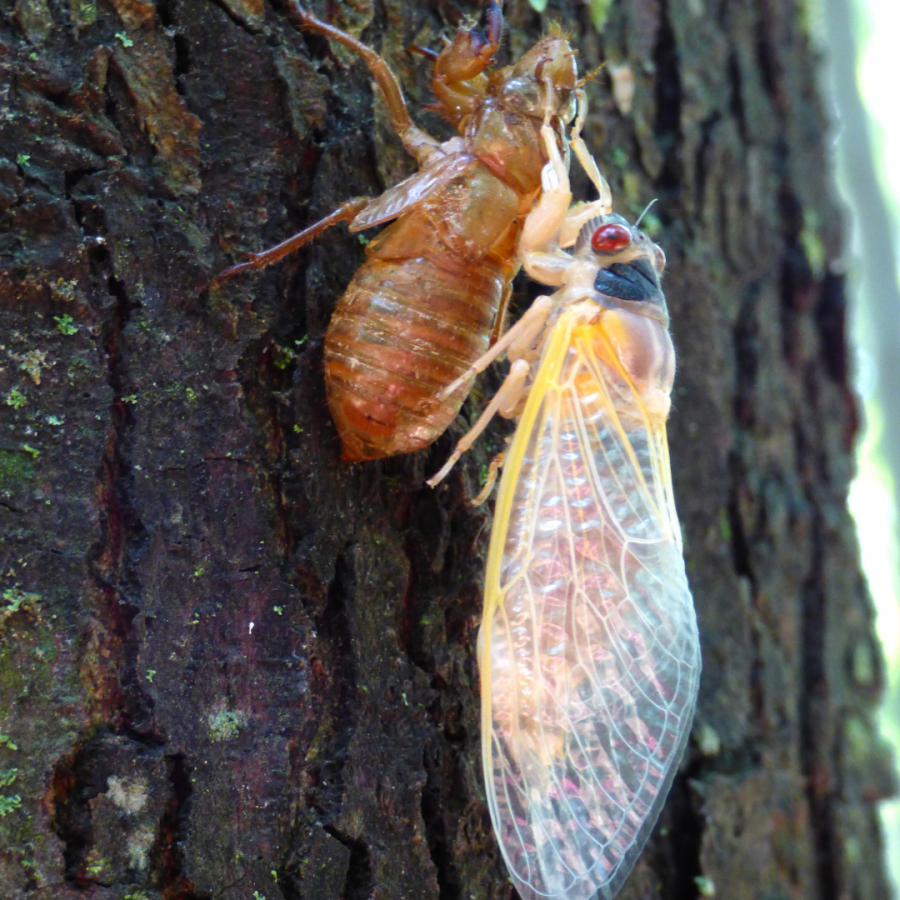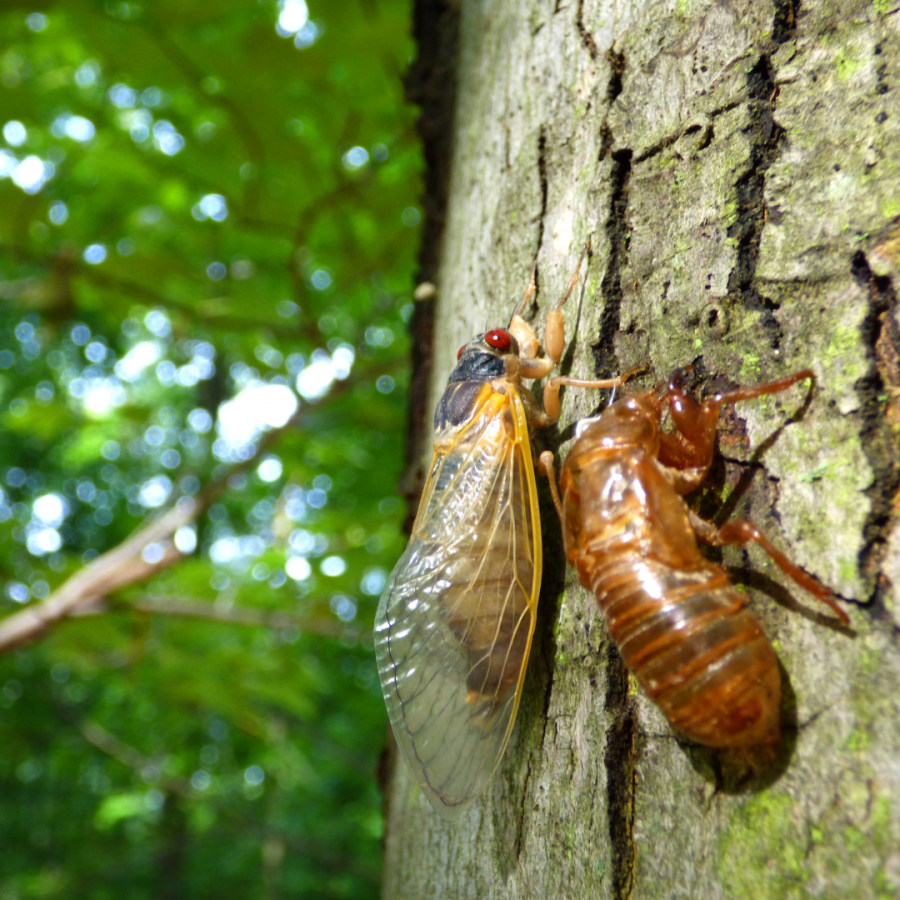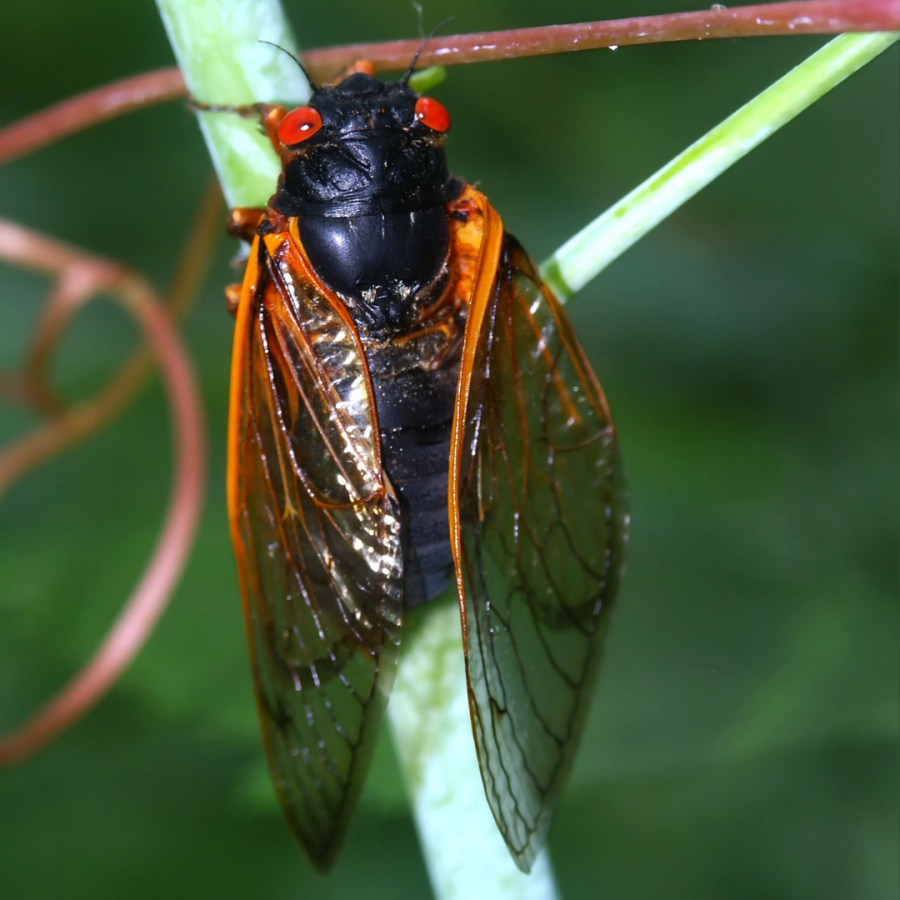Blog
Marking Time Without Calendars

By Laura Weinel, Community Engagement Coordinator
Imagine a world where there are no calendars to mark the days and no clocks to count the time. Instead, each passing year is tracked using... plants. Confused yet? Lucky for us humans, this isn’t our norm. For periodical cicadas, though, it’s reality. The science behind this behavior is just as fascinating as one would expect from these weird and wonderful creatures.
Whether we are ready for them or not, it won’t be long before periodical cicadas once again begin emerging from their underground dwellings. This process will start when the ground temperature reaches 64 degrees, likely sometime in mid-May. It will be the first time this particular brood of cicadas, Brood X (pronounced “brood ten”), has seen the light of day in 17 years (their last emergence was, of course, in 2004).

Once they have emerged, the now-adult cicadas will only live for a month or two. This brief stint means that the cicadas have to make the most of every day. Male cicadas spend their days buzzing loudly en masse, hoping to attract a mate. Females, on the other hand, do not sing, but instead spend their time laying eggs in various tree branches. These eggs will hatch shortly thereafter, at which time the young cicadas will crawl down from their tree and head about a foot underground for the next 17 years.
For a long time, this behavior stumped experts. Why would any animal spend almost two decades buried beneath the soil? And how on earth do they know when to emerge? The answer, of course, lies with the plants. Periodical cicadas’ food source is xylem, the fluid that flows from trees’ roots and up through the plant. Cicadas are able to track the seasonal pulses of fluid flowing in the roots. After 17 years of tracking the plants’ cycles in this way, the cicadas know it is time to make their grand debut.

Now, for the million-dollar question. Why spend 17 years underground? Scientists are still trying to figure out the answer to this, but the prevailing theory has to do with predation. Lots of things eat insects, and periodical cicadas are no exception. Having this long gap in between their emergences means that no predators have evolved to feed specifically on them. Something that only comes out every 17 years is a pretty unreliable source of food (although, this summer, their population that numbers near the trillions will certainly be a welcome snack for our local wildlife).
Perhaps you consider yourself a fervent cicada-supporter. Or, you may be among the many who find this 17-year swarm downright creepy. Whichever camp you find yourself in, it’s hard to deny that cicadas are fascinating. This summer, in the midst of the cacophony, take a moment to appreciate the many oddities of the periodical cicada.
Have more questions about Brood X? Click here to read more!